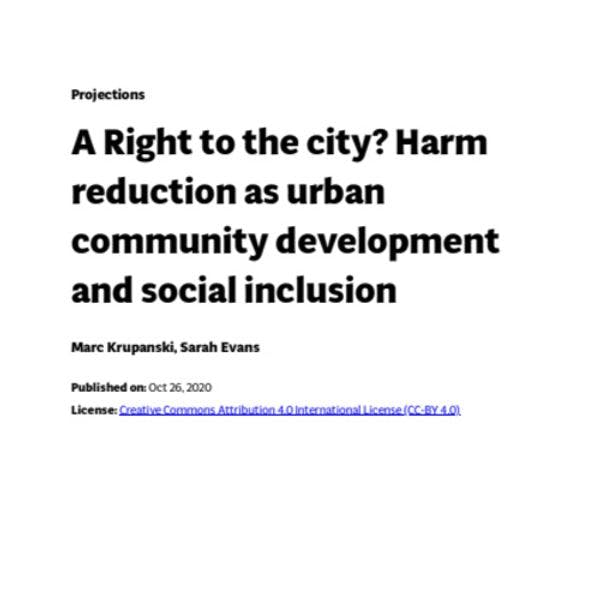Projections
A right to the city? Harm reduction as urban community development and social inclusion
By Marc Krupanski and Sarah Evans / Projections
Urban Latin American harm reduction and drug policy activists are ushering in a new understanding and approach to drug use and harm reduction, which they place under a banner of a “right to the city.” Drawing upon their critical reflection and action to address the realities of their communities, such a move transcends the traditional harm reduction focus on blood-borne infection and discrete medical interventions to one that better encompasses the complexities of their urban geographies, political economic drivers, and drug and health policies. Importantly, this emergent frame for harm reduction also captures their collective praxis to make and hold a claim to the neighborhoods in which they reside by building their own collective political and social power. The groups leading this approach ground themselves in strategies of resistance and social cohesion that try to address the consequences of the war on drugs and contest the claims of the state to police and organize urban poor neighborhoods.
When we consider various approaches to respond to drug use, it is essential to recognize that place matters. Drug use and the criminalization of people who use drugs (PWUD) both happen in places. Patterns of law enforcement are shaped and influenced not only by the stigma of drug use, but also by place-specific confluences of class, race, and other factors that influence how stigma is enacted and felt. Neighborhoods that are impoverished, underserved by government services, and underrepresented politically are, additionally, often the places where the most marginalized drug users tend to congregate in public space, seeking to benefit from relative safety in the context of social “invisibility” in the absence of individual private space (Ramos et al. 2009).
Drug use in a private home or party is less frequently policed and considered a private matter, whereas consumption by poor people, those who are homeless, or people of color, is treated as a public problem. Even in countries that have decriminalized personal drug possession—for example, in Mexico, Brazil, and Colombia—police regularly profile people for drug-related offenses based upon “homeless appearance,” tattoos or “hip hop clothing” (Borquez et al. 2018; Volkmann et al. 2011; Uprimny and Uribe 2013; Langeani and Silva 2018). In addition, it is common for police to use proxy violations—petty offences such as vagrancy—in order to target people who they assume are using drugs (Borquez et al. 2018; Yepes, Guzmán, and Norato 2012). Often, this is done in the name of maintaining “order” or “quality of life” for certain city residents and so that public space remains public for them rather than being usurped by “undesirable” residents.
